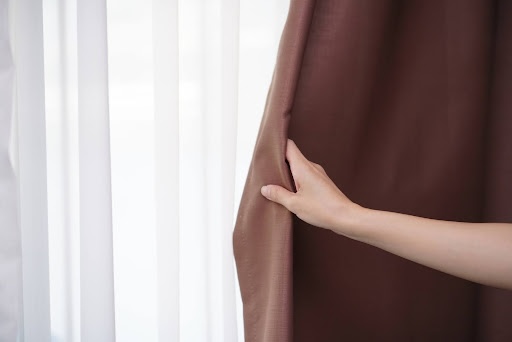Are you tired of the constant noise from traffic, construction, or loud neighbors invading your home? Soundproof windows might be just the solution you need!
This guide will help you understand when and why you might consider soundproofing a window, as well as the best options to effectively reduce unwanted noise. With the right soundproofing solutions, you can transform your living space into a place of peace again.
Inserts and Replacement Soundproof Windows
You have two primary purchasing options: a replacement soundproof window or soundproof window inserts. Each offers unique benefits, so let's dive into what they are and how they can help you achieve a quieter residence.
Replacement Soundproof Windows
Soundproof replacement windows are specially designed windows constructed with multiple layers of glass. They often include laminated glass or special coatings to reduce noise transmission.
These windows work by using thicker glass, multiple panes, and insulating air gaps to block and absorb sound waves. In this case, both the materials and the construction itself are optimized to minimize vibrations; this will ultimately prevent noise from passing through.
Soundproof replacement windows are highly effective at reducing noise, often cutting down sound levels by 50% or more. They are ideal for those seeking a long-term solution to significant noise issues.
Note that soundproof windows cost about $500 to $1,500 per window, based on size, brand, and features (including installation).
And while it's possible to install replacement soundproof windows yourself, professional installation is recommended to ensure a proper fit and maximum soundproofing benefits. Improper installation can compromise their effectiveness.
Window Soundproofing Inserts
Soundproof window inserts are additional panes of glass or acrylic that fit snugly inside your existing window frames. They create an extra barrier to reduce noise without replacing the entire window.
Inserts add another layer of insulation, trapping air between the insert and the existing window. This air gap acts as a buffer, reducing sound transmission. Depending on the quality and specific fit, window inserts can reduce noise by 50% or more.
The cost of window inserts ranges from $150 to $400 per window, making them a more budget-friendly option compared to full replacements.
How to Soundproof Windows Without Replacing Them: DIY Treatments

If you're looking to reduce noise without the expense of replacing your windows, DIY window treatments offer practical, cost-effective solutions. Here, we explore three popular options: soundproof curtains, window blinds/shades, and window film.
Soundproof Curtains for Windows
Soundproof curtains are heavy, dense drapes designed to block and absorb sound. They are typically made from thick materials like velvet or polyester and often include multiple layers.
These curtains work by adding mass and density to your windows, which helps to absorb sound waves while reducing noise transmission. The thicker and heavier the curtain, the more effective it is at dampening sound.
While not as effective as full window replacements, soundproof curtains can significantly reduce noise levels (especially high-frequency sounds). They commonly offer the added benefits of thermal insulation and light blocking, warranting a price range from $30 to $150 per panel, depending on size, material, and brand.
One of the main benefits of soundproof curtains? Installing them is a straightforward DIY project; simply hang them on a sturdy curtain rod above your windows, ensuring they cover the entire window area for maximum effectiveness.
Soundproof Window Blinds and Soundproof Window Shades
Soundproof blinds and shades are window coverings designed to reduce noise. They are often made from thick, layered materials that help block sound.
By creating an additional barrier between your window and the room, these products absorb and reflect sound waves. Cellular shades, in particular, are effective due to their honeycomb structure, which creates air pockets that trap sound waves. These pockets act as insulators, reducing noise by dampening sound vibrations as they pass through the layers.
While not as effective as curtains, soundproof blinds and shades can still provide a noticeable noise reduction (particularly when combined with other soundproofing methods).
Prices vary widely, but the average you can expect is between $50 to $200 per window. Of course, the final price will largely depend on the type and quality.
Most blinds and shades come with installation kits as well as instructions, making them a feasible DIY project. Keep in mind that a snug fit is necessary here to maximize sound reduction.
Soundproof Window Film
As the name implies, window soundproofing film is a thin, transparent layer applied directly to the glass. It is designed to reduce noise and improve energy efficiency at the same time.
The film operates by adding mass to the window, which helps to dampen sound vibration while providing a degree of thermal insulation.
And while not as effective as other methods, window film can still contribute to noise reduction if used in conjunction with other treatments. If this sounds like a good fit for your home, know that costs average between $20 and $100 per roll.
While applying window film is a DIY-friendly project, it still requires careful cleaning of the window and precise application to avoid bubbles or creases.
Why Soundproof Insulation for Windows Matters
One often overlooked yet crucial step is sealing out sound through proper window maintenance. Gaps and cracks around windows can be significant entry points for noise, undermining even the best soundproofing efforts!
How Sealing and Weatherstripping Reduce Noise
Windows (especially older ones) may develop gaps or cracks over time due to wear and tear, temperature changes, and building settling. These openings allow sound waves to penetrate your home, increasing noise levels.
Sealing involves filling these gaps and cracks to create a continuous barrier against sound. By using caulk or sealant around window frames, you can effectively block noise from entering through these small openings.
Similarly, weatherstripping is the process of applying strips of material to the movable parts of windows, such as sashes and frames. This material compresses to form a tight seal when the window is closed, preventing sound from leaking in. It also helps with energy efficiency by reducing drafts.
Steps to Seal and Weatherstrip Your Soundproof Windows
- Inspect Your Windows: Begin by examining your windows for any visible gaps, cracks, or worn-out weatherstripping. Pay attention to areas where the window meets the frame and where the frame meets the wall!
- Apply Caulk or Sealant: Use a high-quality caulk or sealant to fill any gaps or cracks around the window frame. Be sure the sealant is suitable for your window material and can withstand temperature changes.
- Install Weatherstripping: Choose the appropriate type of weatherstripping for your windows, such as adhesive-backed foam tape, V-strip, or rubber gasket. Apply it to the window sashes and frames to create a snug fit when closed.
- Regular Maintenance: Periodically check your windows for any new gaps or worn-out weatherstripping. Reapply or replace materials as needed to maintain an effective sound barrier.
Turn Down the Noise with Hodges
Are you ready to enjoy a quieter home? As a leading window and door installation company in Northern Virginia, we specialize in providing top-notch soundproofing solutions tailored to your unique property. Whether you're battling the noise of bustling streets or lively neighbors, our expert team is here to help you find the perfect soundproof windows and treatments.
Contact us today to schedule a consultation and take the first step towards a more comfortable living space. Let us help you create the peaceful home environment you deserve!


